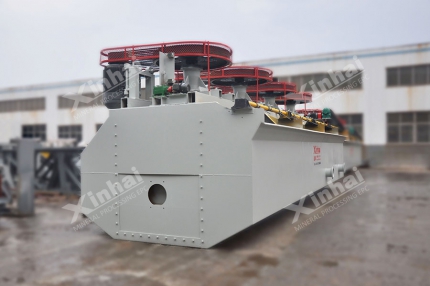Flotation process refers to the general term that the slurry flows through the various operations during ore flotation. In flotation operations, different flotation processes should be adopted for different types of ore. Therefore, the flotation process can reflect the technological characteristics of the ore.
The ore dressing process should be improved in time according to the changes in ore properties and the adoption of new ore dressing process, so as to improve the technical and economic indicators. At present, the common flotation processes mainly include differential flotation process, bulk flotation process, partial bulk-differential flotation process, iso-flotation process, asynchronous flotation process, branch flotation process, ash flotation process and speed flotation process.
Use the table of contents below to navigate through the guide:
01Differential flotation process
Differential flotation process means to extract the ore that contains two or more useful minerals into single concentrate.
The differential flotation process is generally applied in:
● The disseminated grain size of the useful mineral is coarse;
● The content of useful mineral in the ore is high;
● High recovery rate can be obtained but the high-quality concentrate cannot be obtained by other flotation processes.
Generally, differential flotation process can adapt to the change of ore grade and has high flexibility, so it is especially suitable for the primary sulfide ore with high grade.
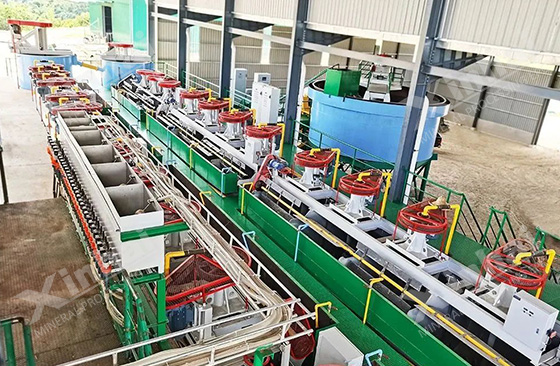
02Bulk flotation process
Bulk flotation process is commonly used in polymetallic sulfide ore flotation process, which means to float all useful minerals firstly, and then separate the useful minerals in the mixed concentrate individually. This flotation process is suitable for polymetallic ore whose useful mineral grade is low (gangue content is high) and the aggregation of useful minerals is closely associated with each other and has a complex structure, fine disseminated grain size.
Advantage: Under the rough grinding, a large number of gangues can be discarded after the flotation process, so that the amount of ore into the follow-up operation is greatly reduced, which especially decrease the subsequent grinding operation cost and equipment investment, reduce the power consumption and save the reagent consumption and infrastructure investment.
Disadvantage: There are collectors on the surface of mixed concentrate, and there are excess collectors in the pulp, which bring difficulties to the next separation operation. It can be seen that the problem of reagent removal of mixed concentrate is the key point in the flotation separation of mixed concentrate. For the polymetallic ore with high-grade of useful minerals and coarse disseminated grain size, differential flotation process is better than bulk flotation process.
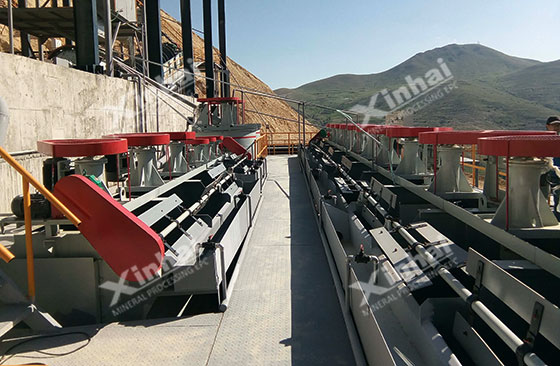
03Partial bulk-differential flotation process
On the basis of the advantages of differential flotation and bulk flotation process, partial bulk-differential flotation process is a new flotation technology that closely combines with ore characteristics. Float the useful minerals in the ore and inhibit other minerals, then activate and float other inhibited minerals, float the mixed concentrate that has been floated and obtain the qualified concentrate.
The partial bulk-differential flotation process is often adopted when the grade of copper-molybdenum, copper-lead, copper-zinc, and lead-zinc in the raw ore is low.
04Iso-flotation process
The flotation sequence of iso-flotation process is not completely classified by the mineral type. It divides the mineral to easy-to-float and difficult-to-float two parts according to the equality or similarity of mineral floatability. Iso-flotation process floats the mineral in order of increasing difficulty then separate. Even for the same mineral, it should be floated in batches if there is a big difference in floatability.
The iso-flotation process is suitable for treating the same mineral, complex polymetallic sulfide minerals that includes easy-to-float and difficult-to-float two parts. For example, in a certain sulfide ore, the useful minerals mainly include galena, sphalerite, pyrite. Among them, sphalerite is divided into easy-to-float and difficult-to-float two kinds, which should be treated by the iso-flotation process. The easy-to-float sphalerite floats with galena, the difficult-to-float sphalerite floats with pyrite, and then separates.
Compared with the bulk flotation process, the iso-flotation process reduces the reagent consumption, eliminates the influence of excess reagents on flotation, and improves the separation index. But the iso-flotation process needs more equipment than the bulk flotation process.
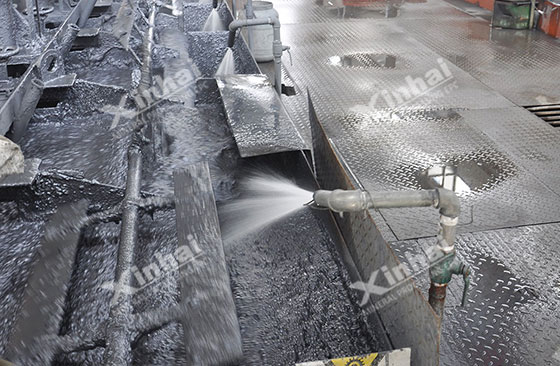
05Asynchronous flotation process
The asynchronous flotation process is suitable for treating the ore with much more lead and less sulfur. Lead is the main carrier of the silver. The first step is to separate the fine lead without inhibitor, recover the fine lead and silver, and the second step is to recover coarse lead and silver, so as to ensure a higher recovery rate of lead and silver.
For lead-zinc asynchronous bulk flotation process, as far as possible to make less sphalerite and pyrite into foam products without using regulator, and select high pH value, add copper sulfate to activate sphalerite, thus inhibiting the pyrite at the second step of bulk concentration, which can recover the lead, zinc and silver mineral maximally.
06Branch flotation process
Branch flotation process means to divide the original pulp into two or more branches, the former coarse separation foam and the latter pulp merge to coarse separation, and then appropriately in series with the corresponding reagent system.
Compared with the conventional flotation process, branch flotation process has the advantage of reducing the reagent consumption. The branch flotation process can improve the separation index, reduce the concentration operation and save power consumption. However, it is only applicable to the mineral processing plant with more than two flotation series, and cannot be implemented for the mineral processing plant with only one series.
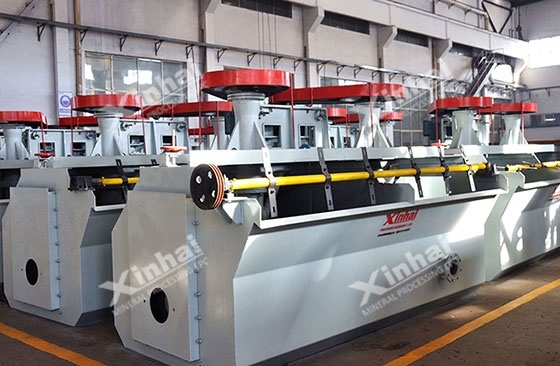
07Ash flotation process
Ash flotation process means the process that adds single tank flotation in the grinding circuit, which is featured with coarse grains, high density and short time. Ash flotation process can quickly float the monomer dissociated useful minerals as the concentrate, prevent them from returning to the grinding circuit, achieve the principle of recovering early and improve the recovery rate.
In a word, ash flotation process is actually beneficial to the ore flotation, especially for non-ferrous sulfide ores containing precious metals with uneven grain size.
08Speed flotation process
According to the different particles of the target mineral, especially the difference of flotation speed between the monomer dissociated particles and the congregated particles, speed flotation process can float the part grains with fast flotation speed firstly in a short flotation time, which shortens the route to the concentrate and achieve recover early and fast.
Therefore, the target mineral particles entering tailings are processed by normal mineral processing technology, so that different floatable particles can be separated by different routes, which is helpful to improve the mineral processing index.
The speed flotation process is especially suitable for the materials whose particle size of target mineral is uneven and coarse concentrate or middling needs to be regrinding.

Here are the eight common flotation processes. Besides, the flotation processes also include gravity flotation process, magnetic flotation process, biological flotation process, ion flotation process, flocculation flotation process, micro-bubble flotation process, positive flotation process, reverse flotation process and so on. When choosing the specific flotation process, it is suggested that the miners should carry out the mineral processing test first, then select the specific flotation process scientifically and reasonably based on the result of mineral processing test and combining with the situation of the mineral processing plant.
09Xinhai classic polymetallic ore dressing projects
1. Shandong 1000tpd molybdenum-tungsten ore project
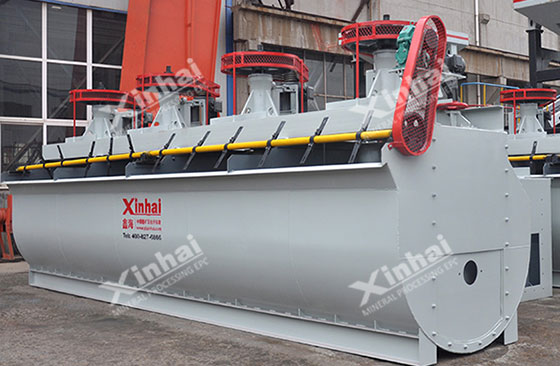
Ore property: The molybdenum grade was 0.13% and tungsten grade was 0.063%. In the ore, the molybdenum mineral was mainly molybdenite, the tungsten mineral was mainly scheelite.
Xinhai solution: According to the ore characteristics of this project, Xinhai adopted molybdenum differential flotation, regrinding and multi-separation of coarse molybdenum concentrate, and molybdenum tailings separation, scheelite flotation process.
2. Tibet 1700tpd lead-zinc ore project design
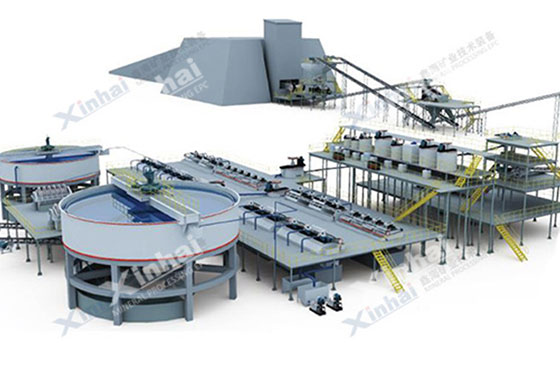
Ore property: The deposit was mainly characterized by the assemblage of lead-antimony-zinc minerals. The lead was associated with antimony, jamesonite was irregular distribution.
Xinhai solution: Xinhai adopted "lead-antimony differential flotation, zinc-sulfur bulk flotation process", which obtained lead-antimony mixed concentrate and zinc concentrate two kinds of products under the reasonable reagent system.
3. Inner Mongolia 2000tpd lead-zinc ore project
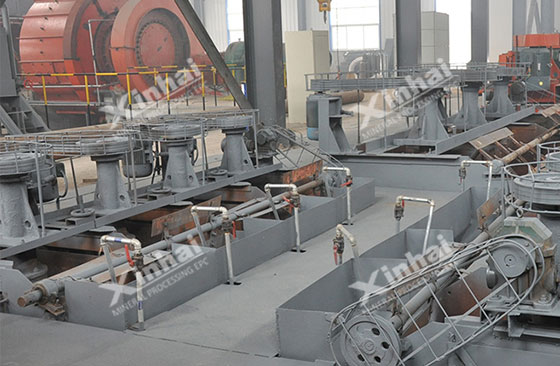
Ore property: The main metallic minerals in this project were pyrite, sphalerite, galena, etc. Nonmetallic minerals were mainly quartz, plagioclase, sericite, chlorite, muscovite, etc.
Xinhai solution: Xinhai decided to adopt one roughing, two scavenging differential floatation process to separate the lead firstly, the coarse lead concentrate was sent to grinding, and the grinding fineness was -400 mesh 87%. Finally, the lead concentrate was obtained by three cleaning. After the lead tailings were separated, the zinc was selected with one roughing, two scavenging and three cleaning to obtain the final zinc concentrate. All middling products were returned to the flotation process in sequence.
4. Mexico 1500tpd polymetallic ore project
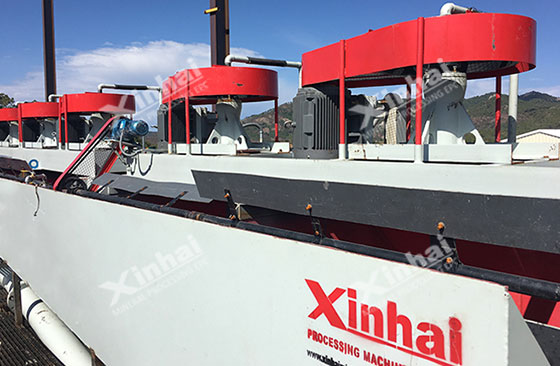
Ore property: The mine was sulfide ore and oxidation ore, copper-lead-zinc-silver associated minerals were the main metallic minerals.
Xinhai solution: three stages a closed circuit crushing and screening - washing - two stages continuous closed-circuit grinding – one roughing, two cleaning and three scavenging flotation - concentrate dehydration process.
5. Tibet 2400tpd lead-zinc ore project design
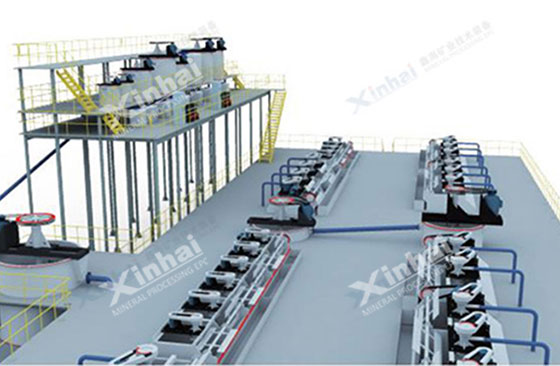
Ore property: The mine was sulfide ore and oxidation ore, lead-zinc-silver associated minerals were the main metallic minerals.
Xinhai solution: Xinhai decided to adopt the differential floatation process and reasonable reagent system. Finally, lead concentrate and zinc concentrate two kinds of products were obtained, the silver mineral was collected in the lead concentrate as much as possible.


 marketing@ytxinhai.com
marketing@ytxinhai.com  0086 13810327080
0086 13810327080 

































































































 CHAT
CHAT MESSAGE
MESSAGE









